So far our journey through Papua New Guinea had taken us into the mountains of the Kokoda Track and Mount Wilhelm, followed by a few days of coastal exploration at Madang.
With a long transit day from Madang due to a flight delay, we made it to our final stop of the PNG expedition, Walindi Resort in Kimbe Bay. It’s one of the most beautiful diving regions in the world but is quite remote. Walindi Resort acts as one of the few access points to the region. We were lucky enough to spend four nights at the resort as our base for the ocean and coastal adventures.
We had three main activity days out of Walindi Resort. You can tailor your activities to your preferences. Many people come and do five full days of diving. Others, like us, mix it top with some land activities like volcano treks and plane wrecks as you will see below.
ISLAND HOPPING IN KIMBE BAY
Our first day at Walindi Resort had some interesting weather. Storms seemed to be brewing but we were keen to get out on the ocean, so we headed out on the boat to explore the islands nearby. On the way out to the islands, the storm really rolled in and we were cruising deeper and deeper into the approaching wall of grey.
When we arrived at our first stop of the day, it had stopped raining so I quickly flew the drone for an aerial perspective of the islands we were about to dive at. The rain wasn’t far away and I was glad I’d made the most of the dry window as it poured for the next few hours. Luckily, the water was like bathwater and it was warmer to be diving or snorkeling on the surface. We found the water to be incredibly clear and full of life. Swimming through the cave was the highlight here.


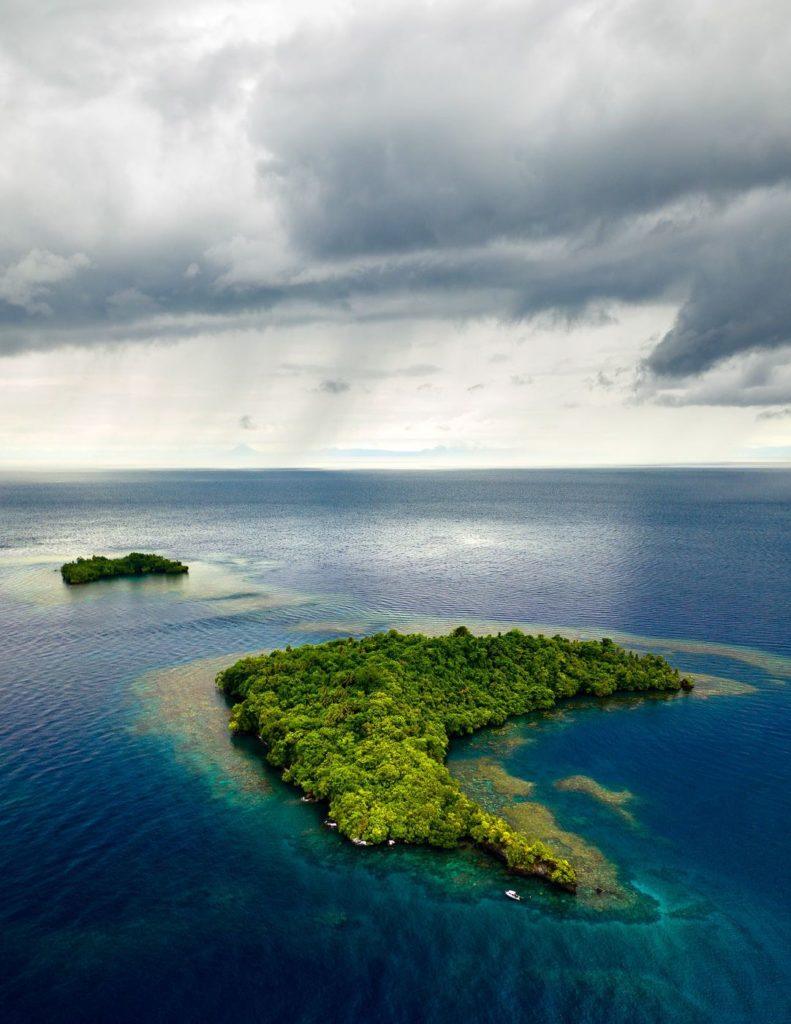



At our next island stop, we waited out the rain while chilling on the boat and exploring the reef. The unique part about this region is that you cannot set foot on many of the islands. The dense jungle literally falls out into the water. This lack of human interference means that bird life is in abundance not only on these small islands but throughout all of the coastal regions of Papua New Guinea were similar landscapes create these great environments for birds.




On the way to Restorf Island, our final stop of the day, we had an amazing opportunity. A pod of dolphins came to join our boat and we did something I’ve never heard of before. The crew attached a pole to the front of the boat and draped a net down the side. Don’t worry it wasn’t for the dolphins it was for us. We put on our masks and snorkels and jumped in the water. Holding onto the net as it dragged through the water we had our heads under the water breathing through the snorkels. As the dolphins came to play at the front of the bow we were literally cruising with the dolphins just a few meters away. We had joined the pod.



We arrived at Restorf Island with good weather and made the final free-dive of the day down the reef wall. Surrounded by fish, sponges and coral the colors were mind-blowing and it was a great way to finish the day.

HABUNA VOLCANO TREK AND THE HOT RIVER
On our second day at Walindi Resort, we ditched the diving fins for our trekking boots and headed into the jungle with our local guide. The 16km round-trip hike took us through dense jungle on a small muddy track with a constant incline. At the top of the trail, the trees stopped and we entered the ‘Death Zone’. A sulfur volcano sits atop the mountain and when it explodes it kills all in its path, which has created an apocalyptic scene at the summit. Dead trees, pools of mud and remnants of an old rainforest are the result of past explosions. The volcano was blowing out huge plumes of sulfur clouds from bubbling pits. We could explore all around the volcano and get a trek to the top of the summit. With not a single other tourist or even local around, it really did feel post-apocalyptic.












After the long trek up and down the volcano, we headed off to find the enchanted hot river. Hidden deep in the jungle, our guide showed us a part of the river where the water is so hit it is almost bubbling. The volcano heats the river creating a natural hot tub of between 35 and 40 degrees celsius. It’s a perfect temperature for a recovery spa amidst the tropical jungle setting.



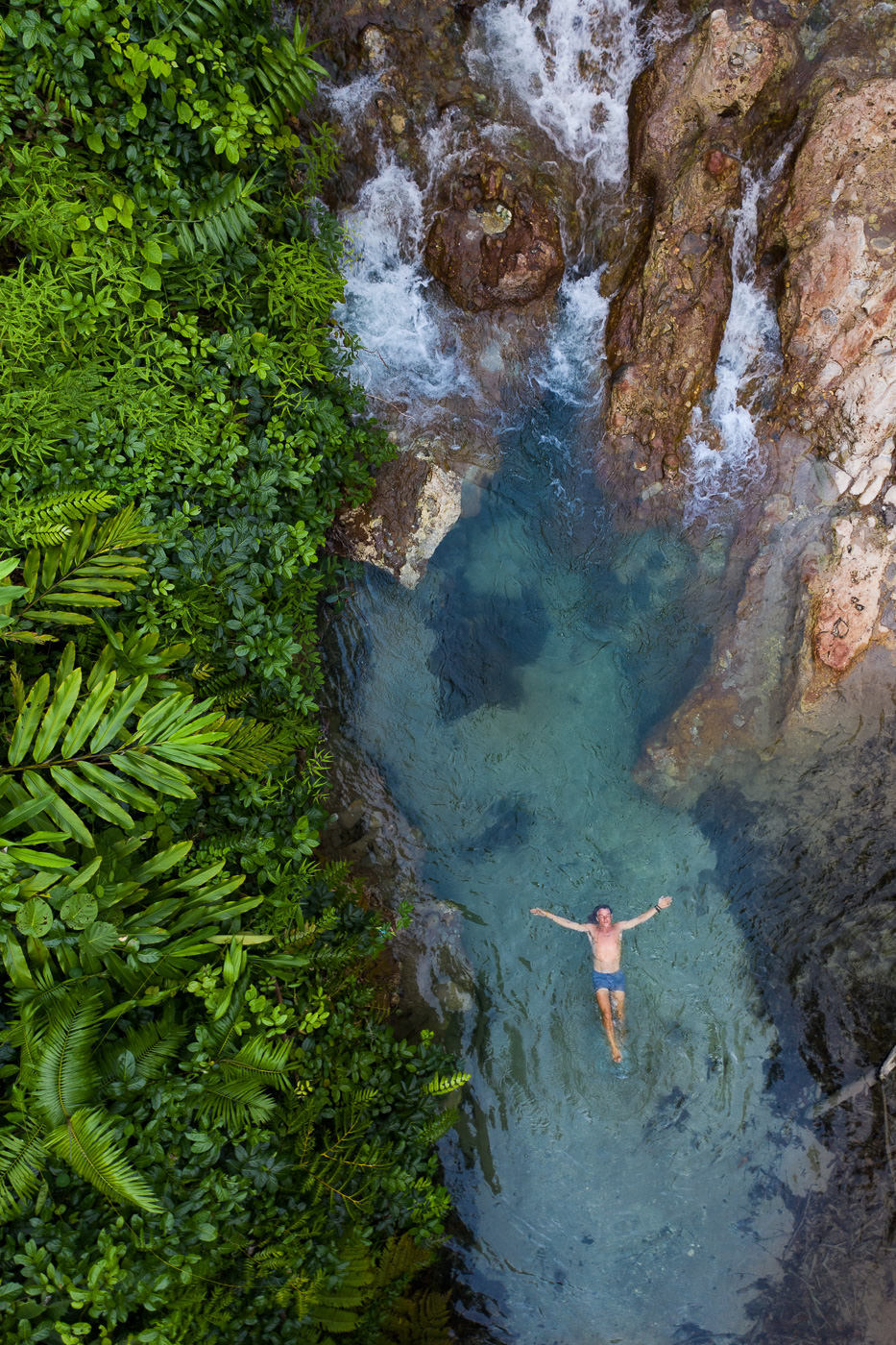

In a funny moment, as we were at the hot river, our guide gave us some clay he found. It is traditionally used for painting in ceremonies. We painted it on and then he gave us his machete as a joke to take some photos. The results were terrifying!
FREEDIVE DAY
It was our last day at Walindi Resort and our last adventure day in Papua New Guinea. Finally, the sun was shining and was in full-force, something we hadn’t seen too much of.
We jumped out on the boat again for another half day on the water where we explore two of the stand-alone reefs in the region. Both had huge walls, which were great for the scuba divers. For the snorkelers, the shallow reefs were colorful of had an abundance of marine life.

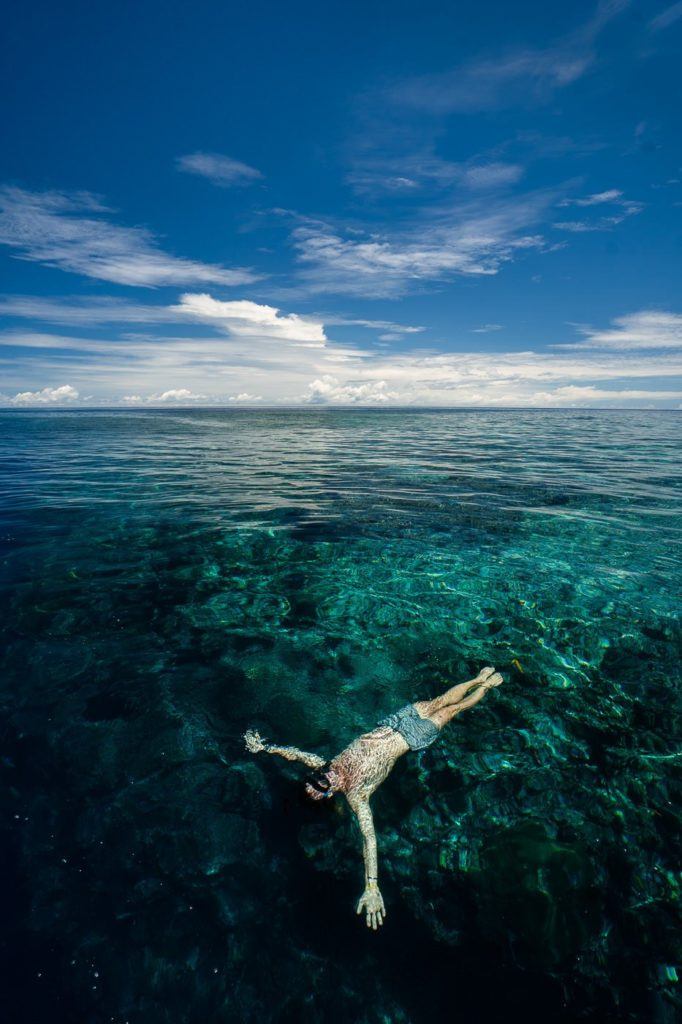

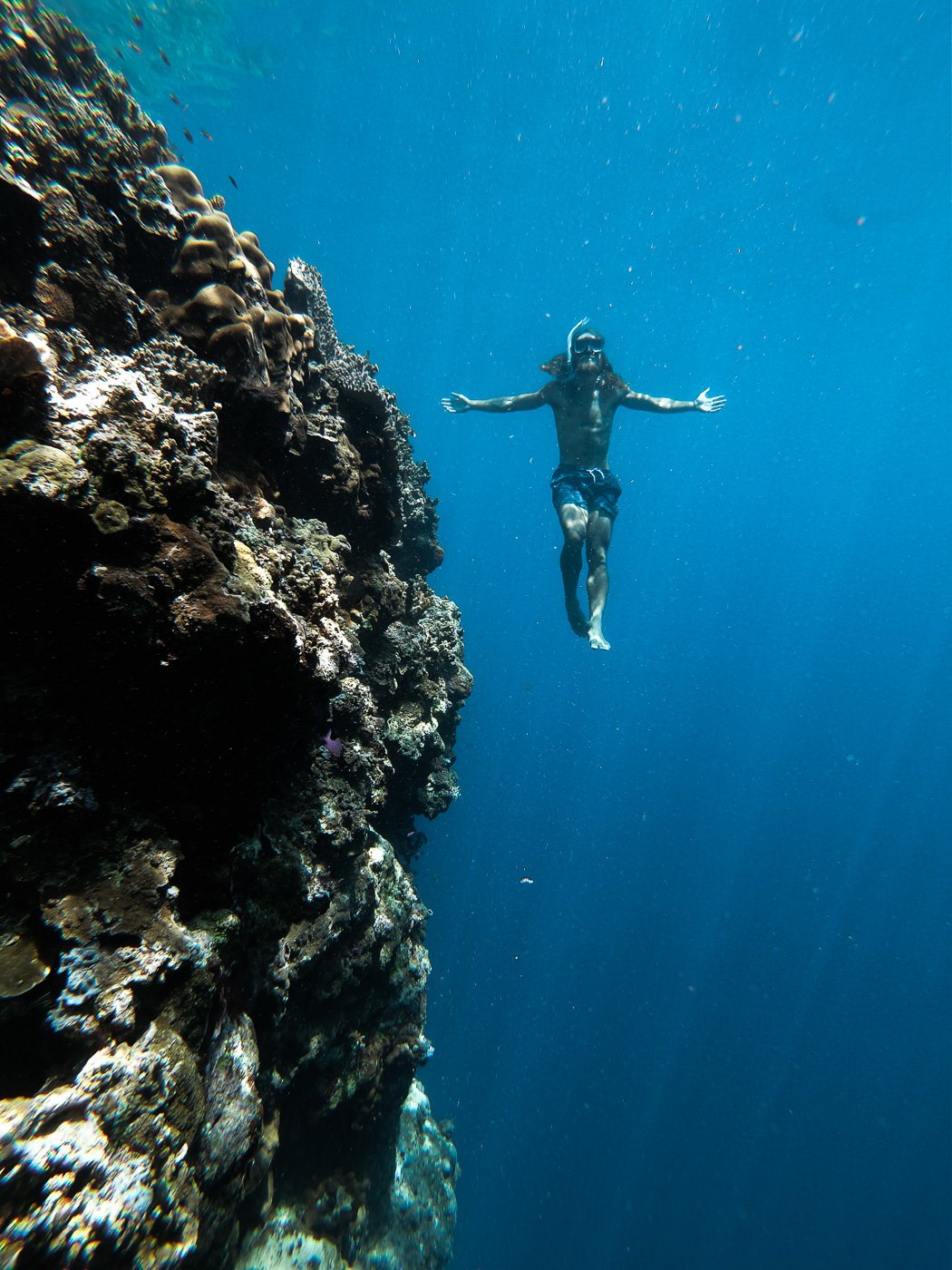
The aerial view was just out of this world and shows how remote it is and how isolated you feel being the only boat in the region. This is not a place where you have to fight the crowds!

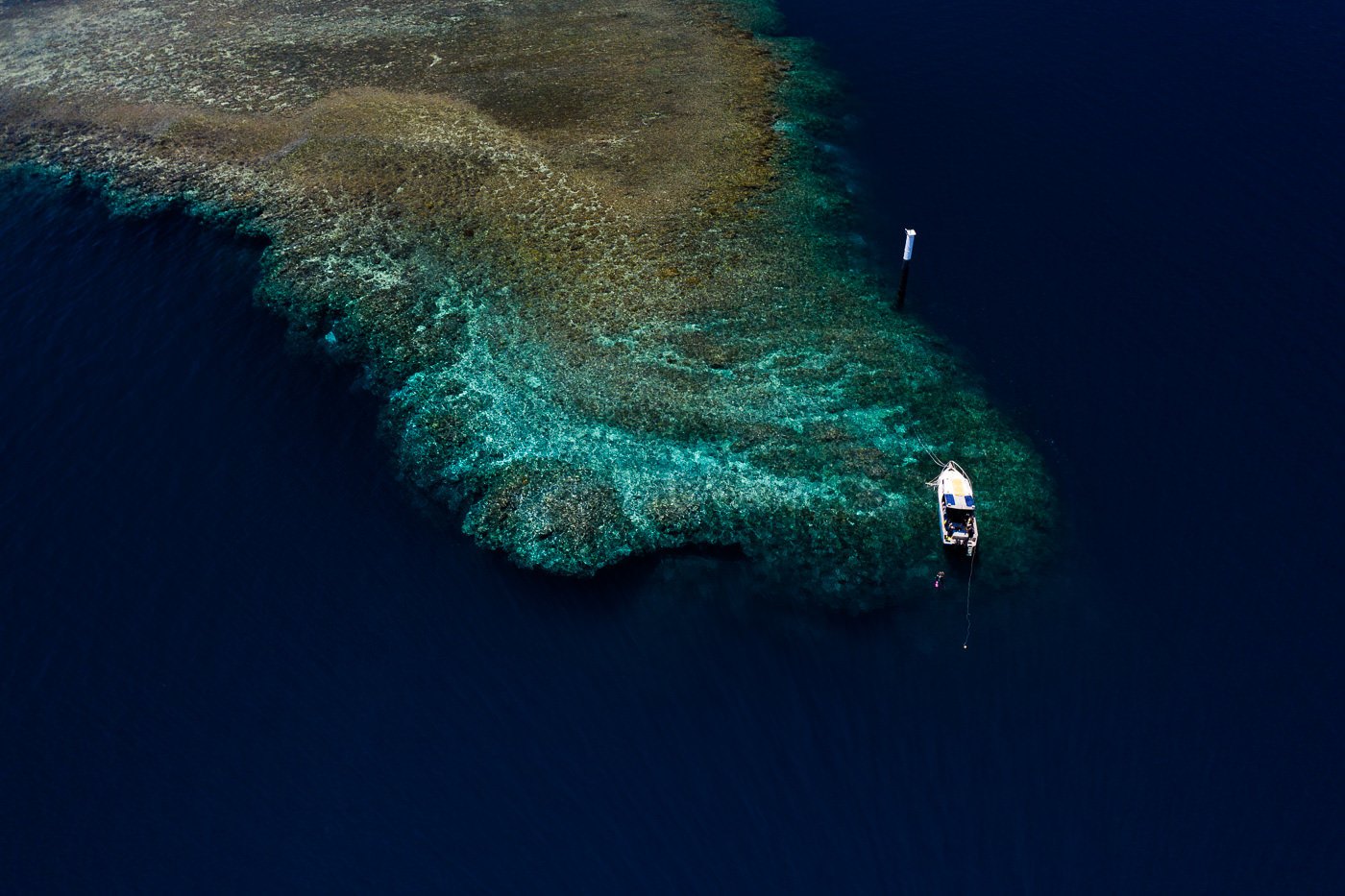

After our final dives were done, we quickly jumped in the Landcruiser and headed into the jungle one final time. This time, our guide showed us two WWII plane wrecks, which were surrounded by palm oil plantations. It was pretty incredible to see how nature is slowly overtaking these two bombers on the inside and outside.



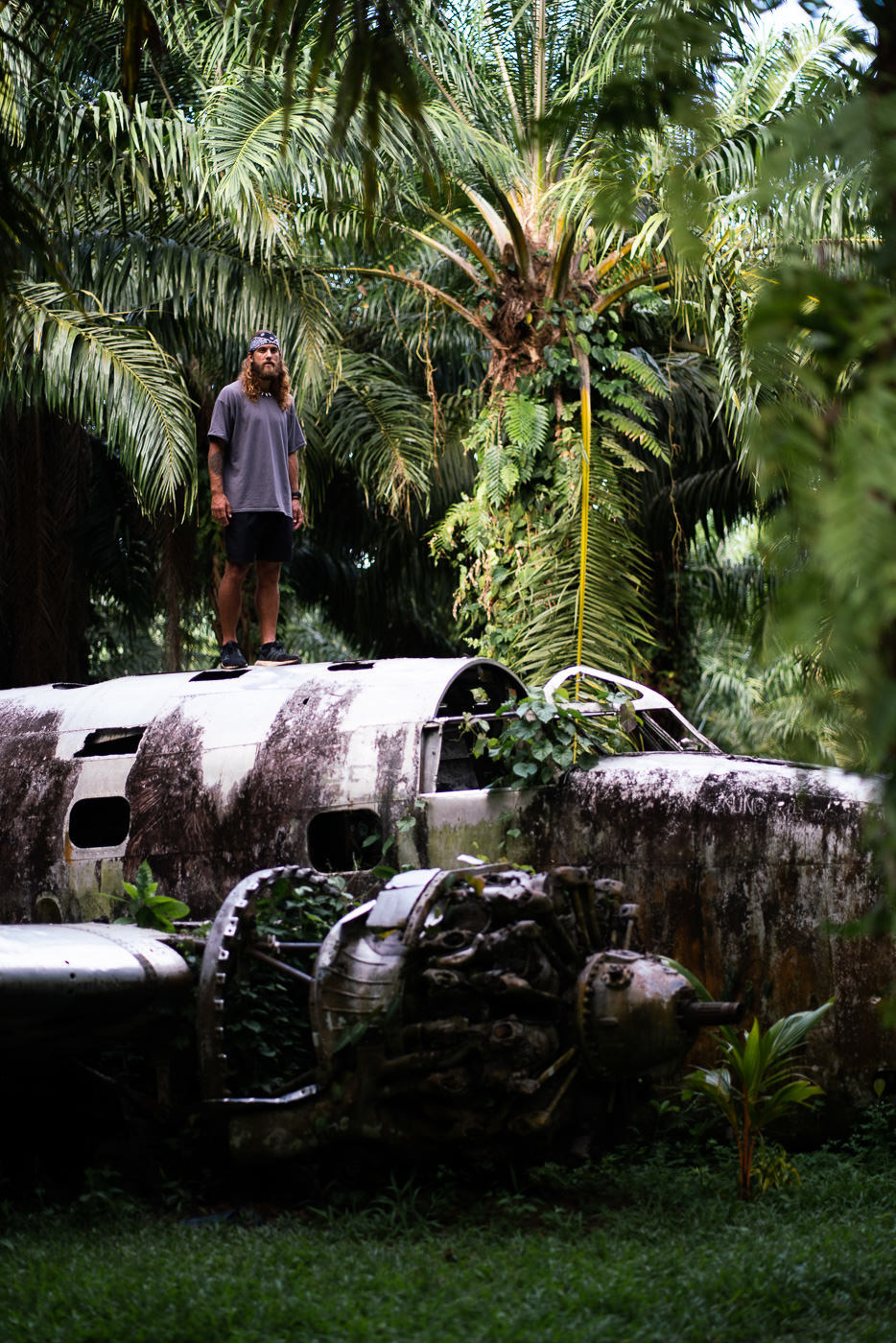








And just like that, our time in Papua New Guinea came to an end. It was a whirlwind three weeks full of adventure never to be forgotten. Thanks to all the tour guides, operators and people we met along the way who made this trip possible and so unbelievable.



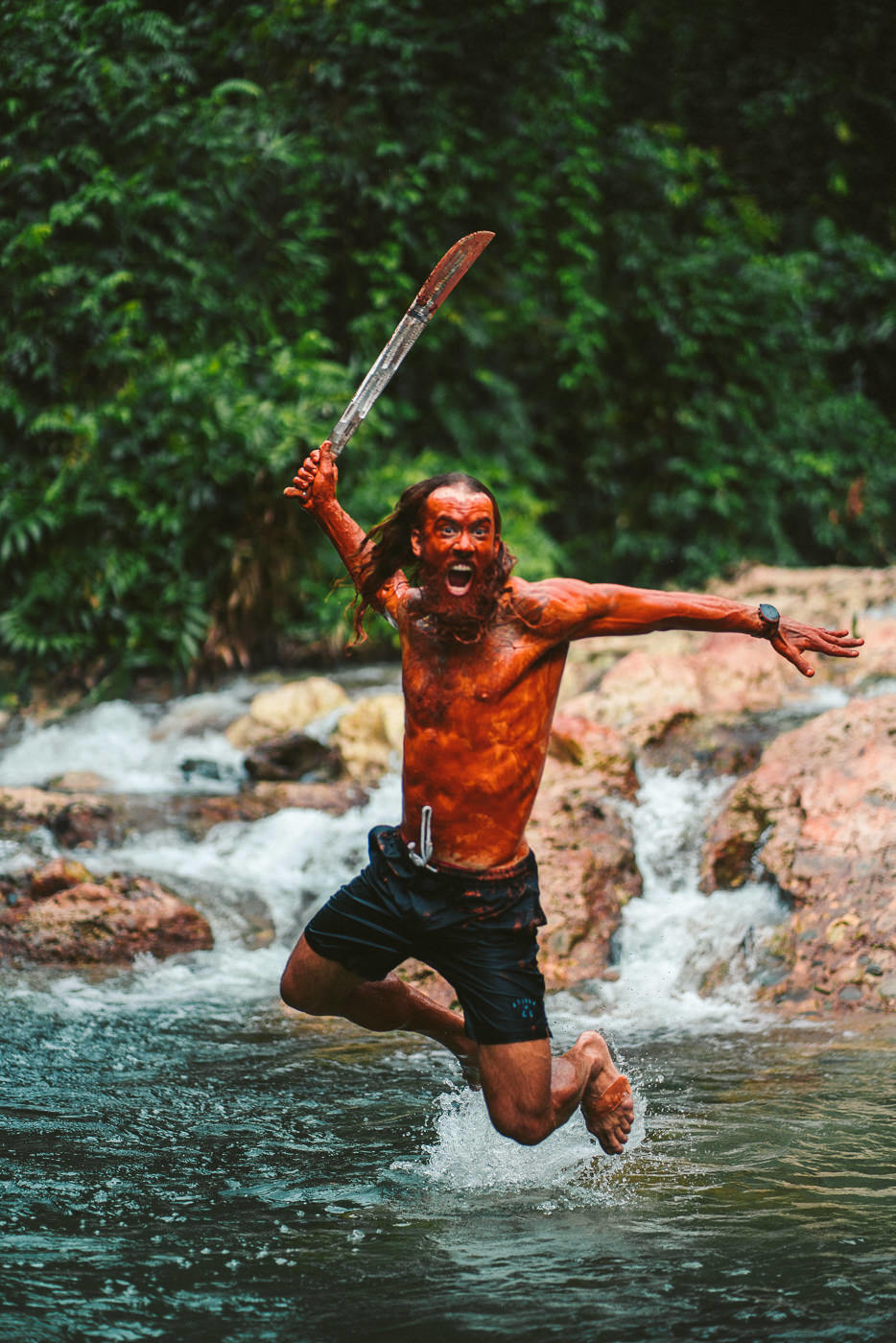
John Pakua
Monday 18th of November 2019
So amazing, truly are so many beautiful places and sights in PNG which the world needs to know about..and people who own these sights can benefit from when visiting tourists come by. Credit to the tour and tourists companies that promote these place on behalf of the local ppeople.
Sunday 17th of November 2019
AMAZING!!! ?